A Guide to Childproofing Your Living Room
This article provides essential tips and strategies for making your living room safe for children, ensuring a secure and enjoyable environment for both kids and parents alike.
Childproofing is not just a trend; it's a necessity for every parent. Imagine your living room as a playground filled with potential hazards. The first step in creating a safe haven for your little ones is to understand the basics of childproofing. It involves identifying potential dangers—sharp corners, loose cords, and unstable furniture—and taking proactive steps to minimize these risks. Why is this important? Because children are naturally curious and adventurous, often exploring their surroundings without a second thought. By childproofing your living space, you can significantly reduce the likelihood of accidents and injuries, allowing both you and your children to enjoy your time together without constant worry.
Have you ever thought about how the way you arrange your furniture can impact your child's safety? Proper furniture arrangement can significantly reduce the risk of accidents. For instance, placing heavy furniture against the wall can prevent tipping, while ensuring that pathways are clear allows for safe movement throughout the room. Think of your living room as a maze; you want to create a path that is not only functional but also safe for exploration. Consider using furniture that doubles as storage to reduce clutter, which can be a tripping hazard. By being intentional with your layout, you can enhance safety while maintaining the functionality of your living space.
When it comes to childproofing your living room, selecting the right furniture is crucial. You want pieces that are not only stylish but also sturdy and non-toxic. Look for furniture made from safe materials that can withstand the wear and tear of young children. For example, consider sofas with durable fabrics that are easy to clean—think of them as your living room's armor against spills and messes. Additionally, opting for furniture that is designed with children in mind can make a world of difference. Brands are now creating pieces that are both aesthetically pleasing and practical for families, allowing you to create a beautiful space without compromising safety.
One of the simplest ways to childproof your living room is to choose furniture with soft edges and corners. Sharp edges can lead to nasty bumps and bruises, especially for toddlers who are still mastering their balance. Look for tables and chairs that feature rounded edges, which can significantly reduce the risk of injury. You can also purchase corner protectors that can be easily attached to existing furniture. Think of these soft edges as a gentle hug for your little ones, keeping them safe while they explore their environment.
Stability is key in childproofing your living room. When selecting furniture, always consider its sturdiness. Heavy bookshelves should be anchored to the wall to prevent tipping, while large pieces like entertainment centers should be secured as well. Remember, a stable environment is a safe environment. You wouldn't want your child to have an unexpected encounter with a wobbly table or a toppling bookcase. In this way, ensuring that all furniture is stable and secure not only protects your child but also gives you peace of mind.
Exposed cords and wires can pose serious hazards in a living room filled with curious little hands. It's essential to organize and secure these cords to keep them out of reach and minimize choking risks. Consider using cord covers or clips to bundle and hide cords along the walls or behind furniture. This not only keeps your living space tidy but also reduces the temptation for children to pull or tug at them. Additionally, you might want to install outlet covers to prevent little fingers from exploring electrical outlets. Think of cords as the hidden dangers in your living room; by securing them, you're creating a safer environment for your children.
The right flooring can make a big difference in child safety. When choosing flooring for your living room, consider options that are soft, slip-resistant, and easy to clean. Carpets can provide a cushioned surface for falls, while hard floors can be more challenging. If you opt for hard flooring, look for slip-resistant finishes to prevent accidents. Think of your flooring as the foundation of your safety strategy; it should support your child's play while minimizing risks. A soft, inviting floor is like a safety net, ready to catch your little ones when they tumble.
Choosing between carpet and hard floors involves weighing safety, comfort, and maintenance. Carpets offer a soft landing for falls and can help absorb noise, creating a cozy atmosphere. However, they can be harder to clean and may harbor allergens. On the other hand, hard floors are easy to maintain but can be slippery and unforgiving. Consider your lifestyle and your child's activity level when making this decision. Perhaps a combination of both—carpet tiles in play areas and hard flooring in high-traffic zones—could be the perfect solution.
Area rugs can enhance comfort and style in your living room, but they may also pose tripping hazards. When choosing area rugs, look for options with non-slip backing to keep them securely in place. Additionally, consider the size and placement of your rugs; they should not obstruct pathways. Think of area rugs as the icing on the cake—beautiful but needing to be applied carefully to avoid any mishaps. By securing your rugs and positioning them wisely, you can enjoy the aesthetic benefits without compromising safety.
Designating specific areas for play helps keep children engaged while minimizing risks. Creating safe, fun play zones within your living room can be a game-changer. Use furniture to create boundaries, and consider incorporating play mats to provide a soft surface for playtime. These zones can be equipped with toys that are age-appropriate and safe, allowing your children to explore and engage in imaginative play without the constant worry of hazards. Think of these play zones as mini-adventures, where your child can explore their creativity safely.
Play mats provide a soft surface for children to play on, making them an essential addition to any childproofed living room. They not only cushion falls but also define play areas, helping children understand where it's safe to explore. When selecting play mats, look for options that are non-toxic and easy to clean. Think of play mats as the safety cushions of your living room—providing both comfort and protection as your little ones play and learn.
An organized toy area reduces clutter and potential hazards. Consider using storage bins, shelves, or baskets to keep toys neatly stored and easily accessible. This not only promotes safety by minimizing tripping hazards but also teaches children the importance of organization. By creating a designated space for toys, you can encourage your children to take responsibility for their belongings while ensuring that your living room remains a safe haven. Think of this organization as a treasure map, guiding your children to their toys while keeping the landscape clear and safe.
In today's digital age, technology safety is essential. As screens become a part of our daily lives, it's crucial to childproof electronic devices and manage screen time effectively in your living room. This means not only securing devices like TVs and gaming consoles but also setting boundaries for their use. Think of technology as a double-edged sword; while it offers entertainment and learning opportunities, it also requires careful management to ensure your child's well-being.
Electronics can be dangerous if not properly secured. Ensure that TVs are mounted securely on the wall or placed on stable furniture that can't be easily tipped over. Use cable management systems to hide cords and prevent any accidental pulls or tugs. Additionally, consider using lockable storage for devices like gaming consoles and remote controls. Think of these measures as creating a fortress around your technology—keeping it safe from curious little hands while still allowing for family enjoyment.
Establishing screen time limits is vital for children's health. It's essential to set reasonable boundaries that promote healthy habits while enjoying technology. Consider creating a family media plan that outlines when and how long screens can be used. Encourage alternative activities like reading, playing outside, or engaging in creative projects. Think of screen time as a treat; it's enjoyable in moderation but can become overwhelming if not managed wisely.
Routine safety checks are crucial for maintaining a childproof living room. As children grow, their needs change, and so do the potential hazards in your home. Make it a habit to regularly assess your living space for new risks, such as furniture that may have become unstable or toys that may have broken. This proactive approach ensures that your living room remains a safe environment for your children as they explore and grow. Think of these safety checks as regular tune-ups for your living space—keeping everything running smoothly and safely.
As children grow, their needs change. It's essential to adjust safety measures over time to ensure ongoing protection and adaptability in your living space. What may have been safe for a crawling baby isn’t necessarily safe for a toddler who is now climbing and exploring. Regularly revisit your childproofing strategies and make necessary updates. Think of this process as nurturing a garden; as your child grows, so too should your safety measures evolve to support their development.
Teaching children about safety is essential. Involve them in discussions about safety practices and encourage them to understand the importance of keeping their environment safe. Use age-appropriate methods to communicate these concepts, such as games or storytelling. This not only empowers children but also fosters a sense of responsibility for their own safety. Think of this involvement as planting seeds of awareness that will grow into lifelong habits of caution and care.
- What are the most common hazards in a living room? Common hazards include sharp furniture edges, loose cords, and small objects that can be choking hazards.
- How can I make my living room safe for toddlers? Use furniture with soft edges, secure cords, and keep small items out of reach.
- Is it necessary to childproof my living room if my child is older? Yes, as children grow, their activities change, and so do the potential hazards in your home.
- How often should I conduct safety checks in my living room? It's a good practice to conduct safety checks every few months or whenever you notice changes in your child's behavior or environment.
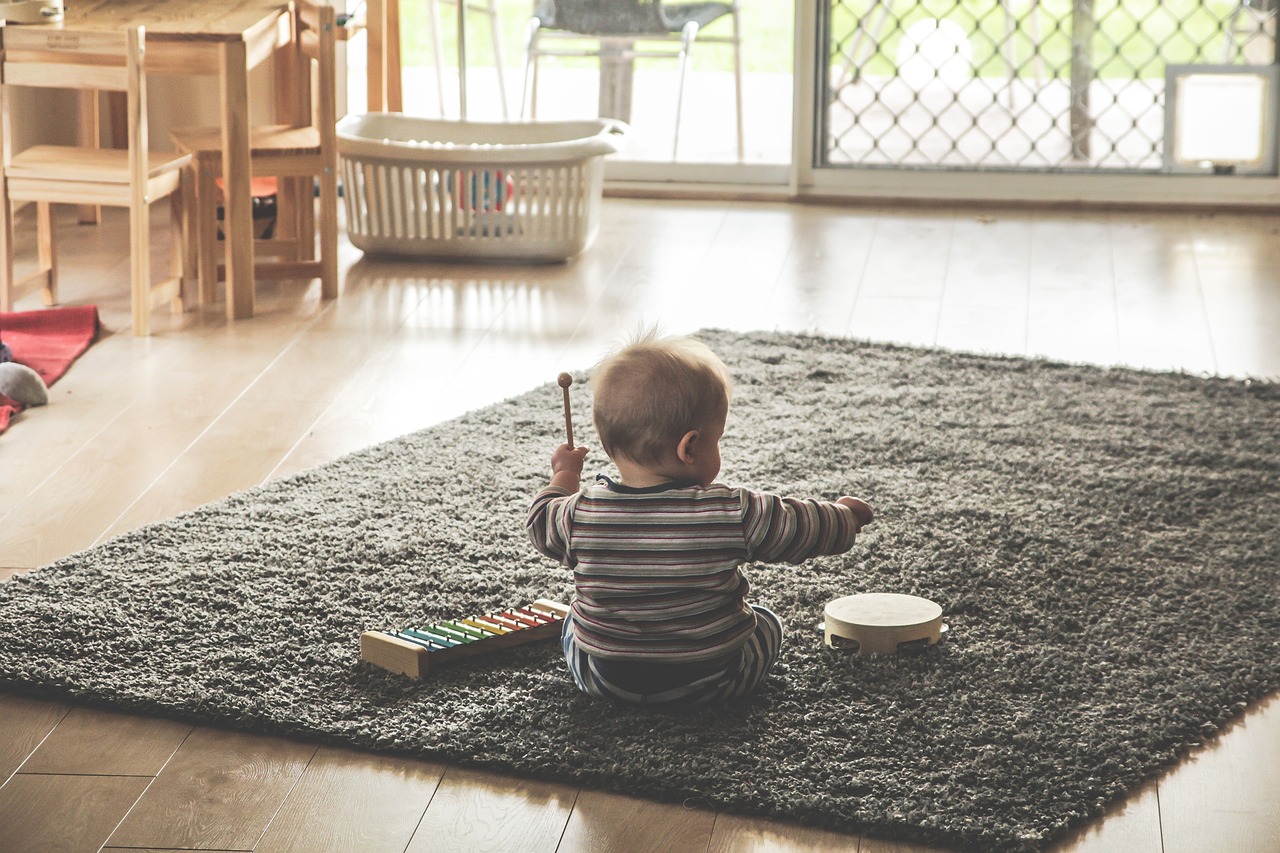
Understanding Childproofing Basics
Childproofing your living room is not just a trend; it's a necessity for any parent or caregiver. Imagine your living room as a playground where every corner, every piece of furniture, and every electronic device could potentially turn into a hazard for your little explorers. The goal of childproofing is to create a safe haven where children can play, learn, and grow without constant worry about their safety. But what does it really involve?
At its core, childproofing is about identifying potential risks and taking proactive measures to mitigate them. This means looking at your living space through the eyes of a child. What might seem harmless to you could be a source of danger for your little one. For instance, sharp edges on coffee tables, loose cords from electronics, or even small decorative items that could be choking hazards. By being vigilant and addressing these issues, you can significantly reduce the chances of accidents.
One of the first steps in understanding childproofing is recognizing the importance of environmental awareness. This involves not only assessing the physical space but also considering the behaviors of your children. Young children are naturally curious and tend to explore their surroundings with little regard for safety. Therefore, it’s crucial to create an environment that encourages exploration while keeping risks at bay.
Some fundamental concepts of childproofing include:
- Identifying Hazards: Walk through your living room and make a list of items that could pose a risk. Look for anything sharp, heavy, or small enough to swallow.
- Implementing Solutions: Once you've identified hazards, think about how to eliminate or mitigate them. This could involve rearranging furniture, adding safety gates, or using corner protectors.
- Ongoing Assessment: As your child grows, their abilities and interests will change. Regularly reassess your living space to ensure it remains safe for your child's developmental stage.
Additionally, it's essential to communicate with other caregivers about your childproofing measures. Whether it's a babysitter, a grandparent, or a friend, ensuring everyone is on the same page about safety will help maintain a secure environment. Remember, childproofing is not a one-time task; it's an ongoing process that evolves as your child grows and learns.
In conclusion, understanding the basics of childproofing is the first step in creating a safe living room for your children. By being proactive and aware of your surroundings, you can provide a nurturing space where your children can thrive. So, grab a notepad, start identifying those hazards, and take action today!
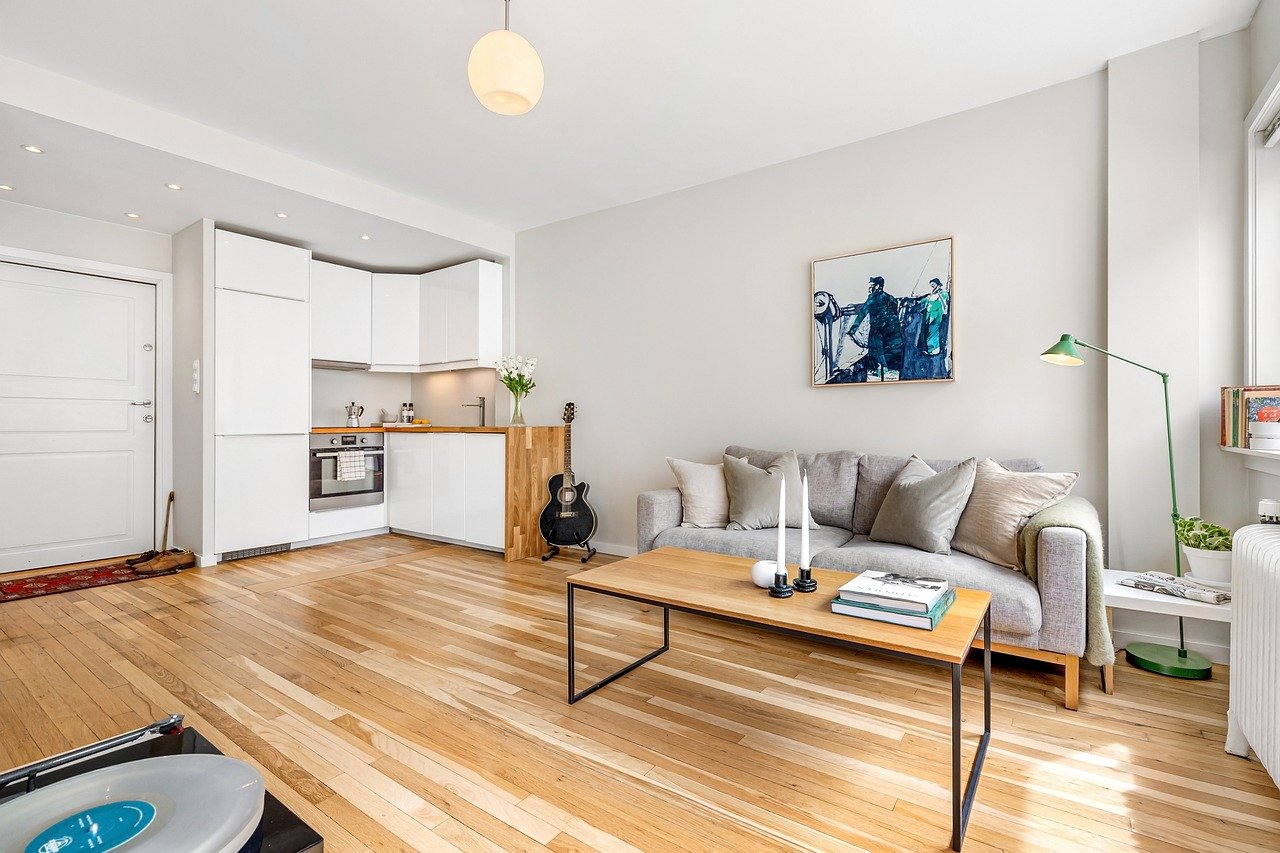
Furniture Arrangement
When it comes to creating a safe environment for your little ones, plays a pivotal role. Imagine your living room as a playground—where every piece of furniture either invites adventure or poses a risk. The goal is to design a space that not only looks appealing but also minimizes the chances of accidents. Start by considering the flow of the room; ensure there’s plenty of space for your children to move around freely without bumping into sharp edges or heavy furniture.
One effective strategy is to arrange furniture in a way that creates open pathways. This not only enhances safety but also makes it easier for parents to supervise their children. For instance, positioning the sofa away from the walls can create a cozy nook while allowing for clear sightlines across the room. Additionally, avoid clustering furniture too closely together, as this can create hidden hazards and make it difficult for kids to navigate.
Another important aspect is the height of furniture. Low furniture is often preferable in a child-friendly living room. It reduces the risk of serious injuries if your child falls, and it’s easier for them to climb on and off without assistance. Consider using ottomans or low coffee tables that can double as play surfaces, allowing your children to engage in activities while remaining safe.
Don't forget about the placement of larger items like bookshelves or entertainment centers. These should be anchored to the wall to prevent tipping. A well-anchored bookshelf can be a treasure trove of stories for your children, but if it topples over, it can quickly turn into a dangerous situation. Regularly check that these items are securely fastened, especially as your little ones grow and become more adventurous.
In addition, consider using soft furnishings strategically. Cushions, bean bags, and rugs can provide comfortable spots for play while also softening any potential falls. Ensure that any rugs are secured to the floor to prevent slipping; a rug that moves underfoot can be a tripping hazard. You might want to invest in non-slip rug pads to keep everything in place.
Lastly, keep in mind the overall aesthetic of your living room. Childproofing doesn’t have to mean sacrificing style. By choosing multifunctional furniture that is both safe and stylish, you can create an inviting space that accommodates both adults and children. For instance, a stylish storage ottoman can serve as a seat, a footrest, and a place to hide toys, keeping your living room organized and safe.
In summary, a thoughtful furniture arrangement can significantly enhance safety in your living room. By prioritizing open pathways, low furniture, secure placements, and soft furnishings, you can create an environment that is both functional and enjoyable for your children. Remember, your living room is not just a place for relaxation; it's also a space where your children can play, explore, and grow. So, let your creativity flow as you design a child-friendly haven!
- What are the best types of furniture for a childproof living room? Look for sturdy, non-toxic furniture with rounded edges and soft materials.
- How can I ensure my furniture is stable? Use wall anchors for heavy items like bookshelves and secure furniture to the wall to prevent tipping.
- Are area rugs safe for children? Yes, but make sure they are secured with non-slip pads to prevent tripping.
- How can I create open pathways in my living room? Arrange furniture to allow clear sightlines and ample space for movement.
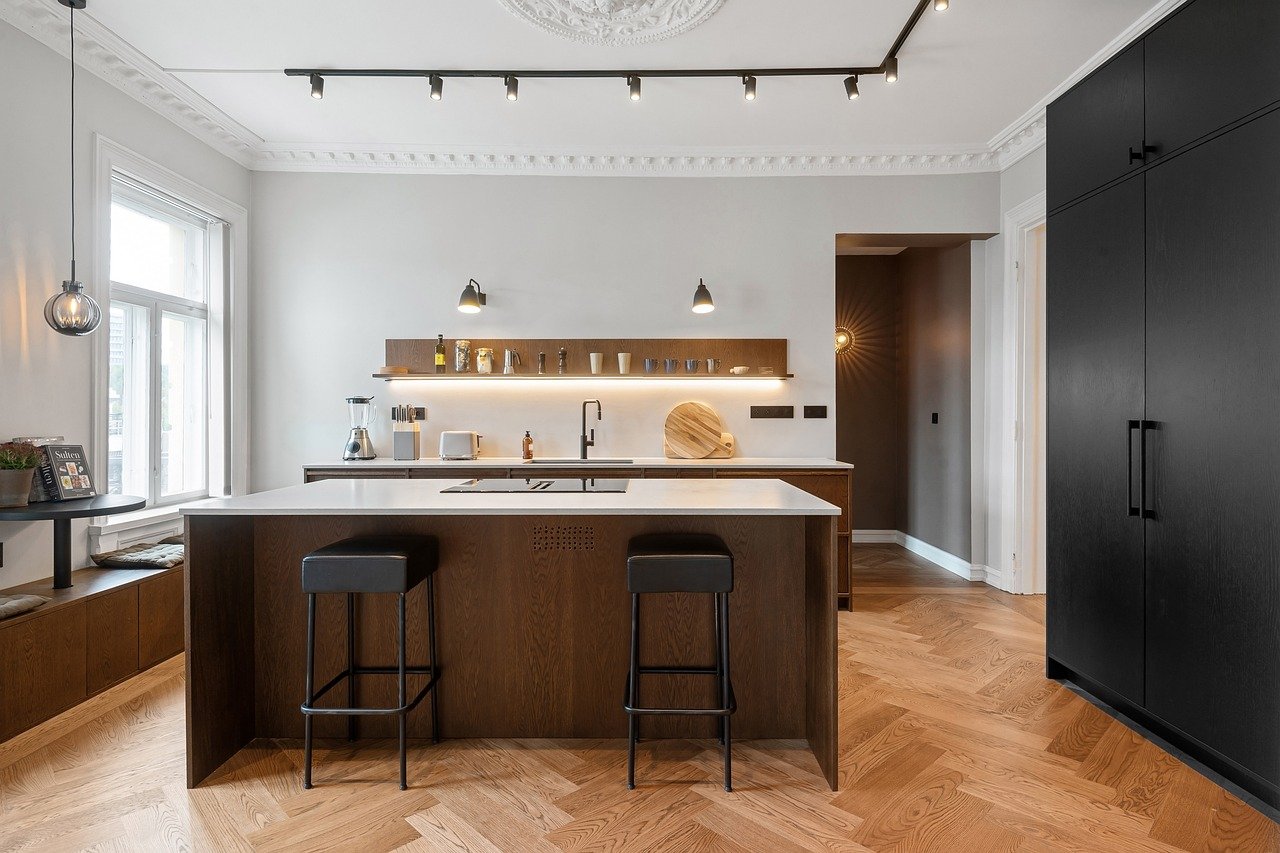
Choosing Safe Furniture
When it comes to childproofing your living room, the choice of furniture is paramount. Selecting the right pieces can make a world of difference in creating a safe and inviting space for your little ones. You want furniture that is not only aesthetically pleasing but also durable, non-toxic, and capable of withstanding the inevitable wear and tear from curious hands and feet. After all, kids are like little tornadoes, whirling through your home, and you need furniture that can handle the storm!
First and foremost, look for sturdy furniture. Items made from solid wood or high-quality materials are less likely to break or tip over, providing a safer environment for your children. Avoid flimsy pieces that can easily topple, as they can pose serious risks. A great way to assess the sturdiness is to check the weight of the furniture; heavier pieces tend to be more stable. You might also want to consider furniture that has been specifically designed for families with children. Many manufacturers now offer collections aimed at parents, featuring robust designs and finishes that can withstand the rigors of daily use.
Moreover, non-toxic finishes are critical when choosing furniture. Children are naturally inclined to touch and explore their surroundings, often putting their hands and mouths on furniture surfaces. Therefore, opting for furniture that is free from harmful chemicals, such as formaldehyde or volatile organic compounds (VOCs), is essential. Look for products that are labeled as GreenGuard Certified or meet similar safety standards, ensuring that your living space is as healthy as it is stylish.
Another aspect to consider is the design of the furniture. Choose pieces with soft edges and rounded corners to minimize the risk of injuries. Sharp edges can lead to cuts and bruises, especially when your little ones are busy exploring their environment. Many furniture brands now offer designs specifically tailored for families, featuring rounded corners that are not only safer but also add a playful touch to your living room.
Don't forget about the arrangement of your furniture. Ensure that larger pieces are positioned in a way that creates a safe flow through the room. Avoid blocking pathways or creating obstacles that could lead to trips and falls. You might even consider anchoring heavier furniture, such as bookshelves or entertainment units, to the wall to prevent tipping. This simple step can provide peace of mind, knowing that your children are safe while they play.
In conclusion, choosing safe furniture is a crucial step in childproofing your living room. By focusing on sturdy, non-toxic, and well-designed pieces, you can create a space that is both functional and safe for your children. Remember, a well-thought-out furniture selection not only enhances the beauty of your home but also fosters a secure environment where your kids can thrive!
- What materials should I avoid when choosing furniture for my living room?
It’s best to avoid furniture made from particle board, as it often contains harmful chemicals. Additionally, steer clear of items with sharp edges and those made from materials that are not child-safe. - How can I ensure my furniture is stable?
Look for furniture that is heavy and has a wide base. You can also use wall anchors for taller pieces to prevent tipping. - What are some signs that furniture is non-toxic?
Look for certifications like GreenGuard or CertiPUR, which indicate that the furniture meets strict chemical emissions limits. - Are there specific brands that specialize in child-safe furniture?
Yes! Brands like IKEA, Pottery Barn Kids, and Crate & Barrel offer collections designed specifically for families with children.
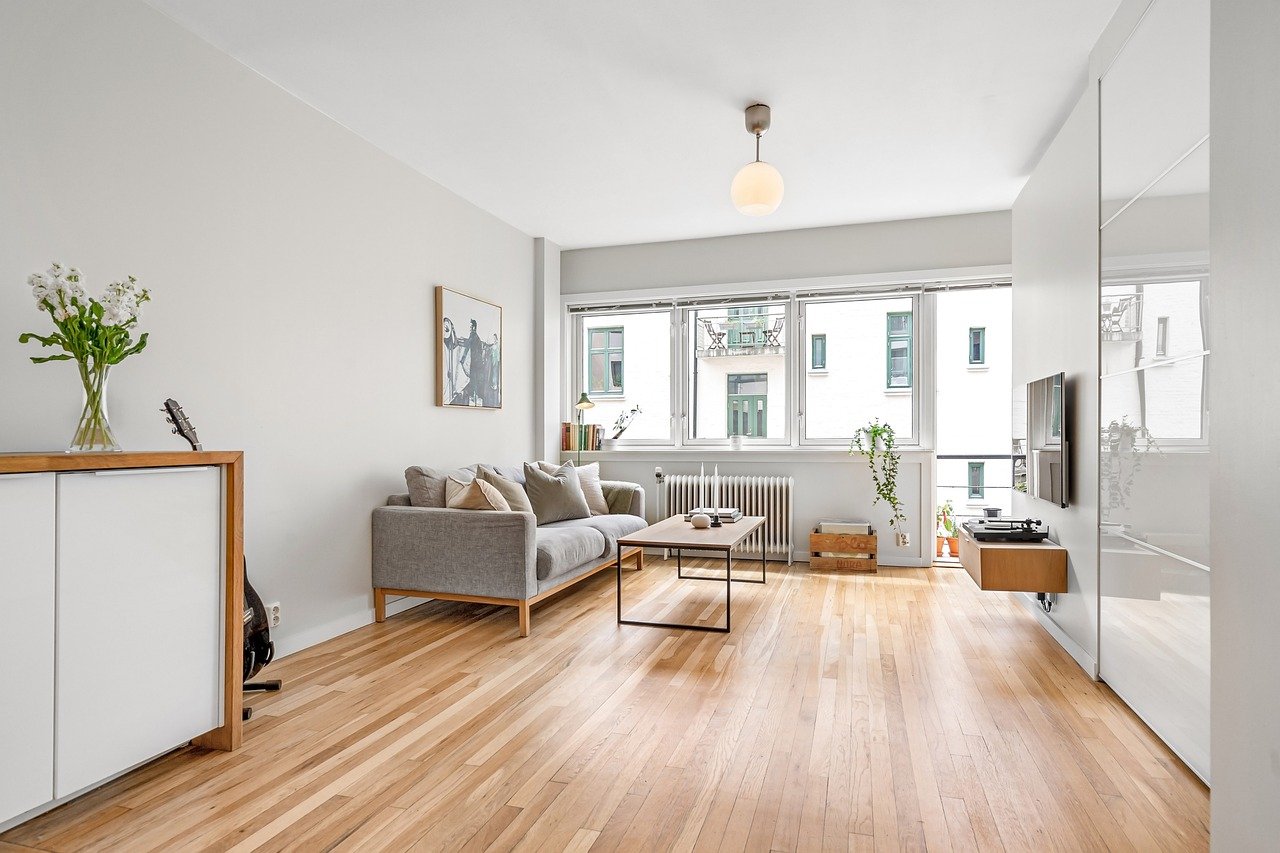
Soft Edges and Corners
When it comes to childproofing your living room, one of the most effective strategies is to focus on the edges and corners of furniture. Kids are naturally curious and often explore their surroundings by crawling, climbing, and sometimes tumbling. This exploration can lead to accidents if sharp edges are present. By choosing furniture with soft edges and rounded corners, you significantly reduce the risk of injury. Imagine your little one zooming around the living room, their laughter filling the air, and then suddenly—bam! A collision with a sharp corner. Ouch! That’s a scenario we all want to avoid.
Soft-edged furniture not only protects your children but also gives you peace of mind as a parent. Look for items that are specifically designed with child safety in mind. Many manufacturers now offer a range of products that feature rounded corners and smooth finishes. For instance, coffee tables, ottomans, and even bookshelves can come in designs that prioritize safety without sacrificing style.
Here are a few types of furniture to consider for a child-friendly living room:
- Round Coffee Tables: These are perfect as they eliminate sharp corners entirely.
- Soft Ottomans: Not only do they provide extra seating, but they can also double as a soft landing pad during playtime.
- Curved Sofas: Sofas with rounded edges can add a modern touch while ensuring safety.
Additionally, there are several products available that can help you modify existing furniture. Corner guards and edge bumpers are easy to install and can provide an extra layer of protection. These items are typically made from soft materials that can absorb the impact of a fall, making them a smart investment for any parent.
In summary, soft edges and corners are essential elements of a childproof living room. By choosing the right furniture or adding protective accessories, you create a safer environment for your children to play and explore. Remember, safety doesn't have to compromise style. With a little creativity and attention to detail, you can design a living space that is both functional and family-friendly.
Q1: What are the best materials for childproof furniture?
A1: Look for materials that are non-toxic and durable, such as solid wood or soft upholstered fabrics. Avoid sharp metal or glass items.
Q2: How can I make my existing furniture safer?
A2: You can use corner guards and edge bumpers to cover sharp edges. Additionally, rearranging furniture to create open spaces can help prevent accidents.
Q3: Are there specific brands known for child-safe furniture?
A3: Yes, brands like IKEA, Pottery Barn Kids, and KidKraft offer furniture designed with child safety in mind, featuring soft edges and sturdy construction.
Q4: How often should I reassess my living room for safety?
A4: Regularly assess your living room every few months or whenever you notice changes in your child’s mobility or behavior.
Q5: Should I involve my children in safety discussions?
A5: Absolutely! Teaching your children about safety in a fun and engaging way can help them understand the importance of being cautious around furniture and play areas.
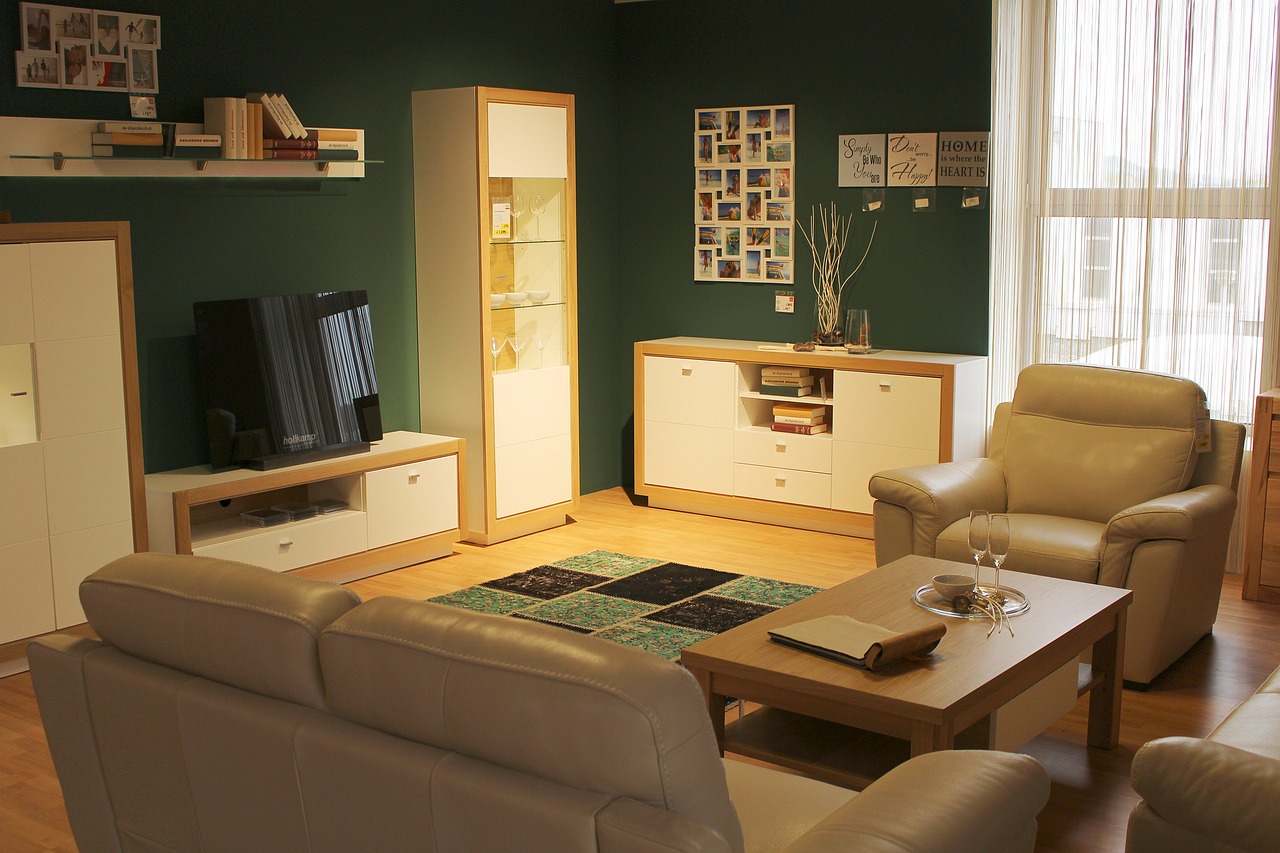
Stable and Secure Pieces
When it comes to childproofing your living room, one of the most critical aspects is ensuring that your furniture is both stable and secure. Children are naturally curious and adventurous, which means they often explore their surroundings in ways that can lead to accidents. Imagine a toddler pulling themselves up on a wobbly table or a bookshelf that isn't anchored to the wall—yikes! To prevent such scenarios, it's essential to choose furniture that can withstand the energetic antics of little ones.
First, look for furniture that is heavy and sturdy. Items like solid wood tables or couches with a low center of gravity are less likely to tip over. Additionally, consider the height of your furniture. For instance, low-profile sofas and benches can provide a safer option, as they are less likely to cause injury if a child falls off them. If you're considering shelves, opt for low, wide units that can be secured to the wall. This way, even if a child tries to climb them, the risk of tipping is minimized.
Moreover, securing your furniture is just as important as its inherent stability. Use anti-tip straps or brackets to anchor larger pieces like dressers and bookshelves to the wall. This simple addition can make a world of difference in preventing accidents. It's a small investment for peace of mind, and it’s a proactive step in creating a safe environment. Remember, safety doesn’t have to compromise style; there are plenty of chic options that are both beautiful and functional.
Now, let’s talk about the materials used in your furniture. Aim for pieces that are made from non-toxic materials, especially if your little ones are prone to putting things in their mouths. Look for labels that indicate the furniture is free from harmful chemicals. This choice not only protects your children but also contributes to a healthier living environment.
In summary, when selecting stable and secure pieces for your living room, consider the following:
- Choose heavy, low-profile furniture.
- Secure tall items to the wall with anti-tip straps.
- Opt for non-toxic materials to ensure safety.
By taking these steps, you can create a living space that is not only stylish but also safe for your children to explore and enjoy.
Q: How can I tell if my furniture is stable enough for children?
A: Test the stability by gently pushing on the furniture. If it wobbles or feels insecure, consider anchoring it or replacing it with a sturdier option.
Q: What are some safe materials to look for in children's furniture?
A: Look for furniture made from solid wood, metal, or high-quality plastics that are labeled as non-toxic and free from harmful chemicals.
Q: Are there specific furniture brands known for child safety?
A: Yes, many brands specialize in child-safe furniture. Research brands that prioritize safety features, and always read reviews from other parents.
Q: How often should I check my furniture for safety?
A: It’s a good practice to check your furniture regularly, especially as your child grows and becomes more active. Make adjustments or repairs as needed.
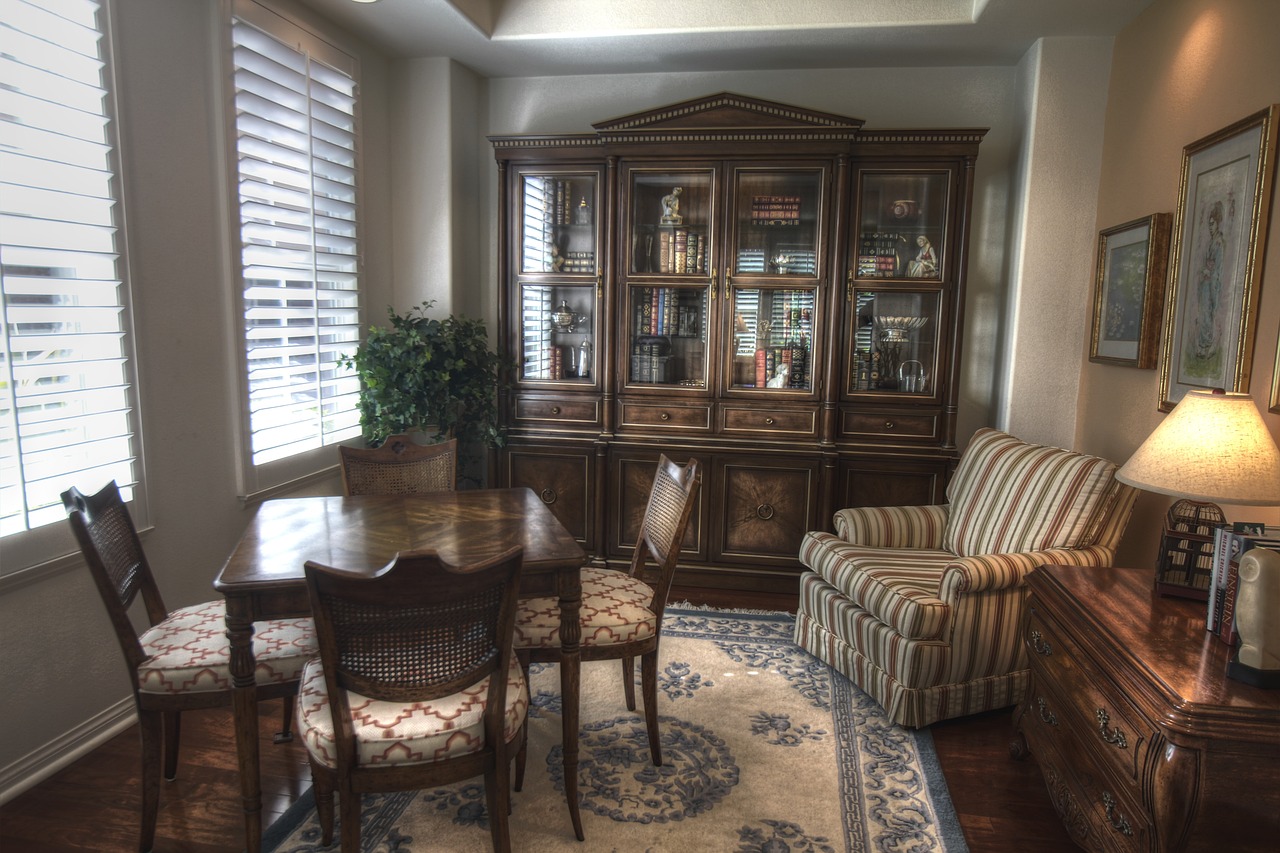
Securing Cords and Wires
When it comes to childproofing your living room, securing cords and wires is an absolute must. These seemingly innocuous items can quickly turn into hidden dangers for curious little hands and feet. Just think about it: a simple power cord can become a trip hazard or, worse, a choking risk if left unattended. To create a safe environment, you need to be proactive about managing these cords. But how can you effectively tame the wild jungle of wires that often sprawls across our living spaces?
First, consider using cord organizers. These nifty tools can help you bundle and conceal cords, keeping them out of reach of your little explorers. You can use cable clips to attach cords to the wall, or even invest in cord covers that can be painted to match your walls, making them blend seamlessly into your decor. This not only enhances safety but also maintains the aesthetic appeal of your living room.
In addition to organizing cords, it’s crucial to think about their placement. Always try to run cords along the walls rather than across open spaces where children play. If you must have cords on the floor, use rubber mats or rugs to cover them, providing an added layer of protection against trips and falls.
Here’s a quick summary of effective strategies for securing cords and wires:
- Use cord organizers: Keep cords bundled and out of reach.
- Secure cords to walls: Use clips to attach cords along the wall.
- Cover cords: Use rugs or mats to hide cords on the floor.
- Invest in cord covers: Choose options that blend with your decor.
Moreover, be vigilant about checking for frayed or damaged cords. Not only do they pose a risk of electrical shock, but they can also be a tempting chew toy for younger children. If you spot any signs of wear and tear, it’s best to replace those cords immediately. Remember, a little vigilance goes a long way in ensuring the safety of your little ones.
Lastly, don’t forget to talk to your children about the dangers associated with cords and wires. Teaching them to respect these items can foster a sense of awareness and responsibility. After all, safety is a team effort, and involving your kids can empower them to make safer choices in their play environment.
Q: How can I hide electrical cords in my living room?
A: You can use cord covers, decorative boxes, or even furniture to conceal cords. Running them along walls and securing them with clips also helps keep them out of sight.
Q: Are there any products specifically designed for childproofing cords?
A: Yes, there are various childproofing products available, such as cord wraps, clips, and covers that can help secure and hide cords effectively.
Q: What should I do if my child plays with cords?
A: If your child is playing with cords, gently redirect them to a safer activity. It's important to explain why cords are dangerous and encourage them to engage with toys or activities that are safe.
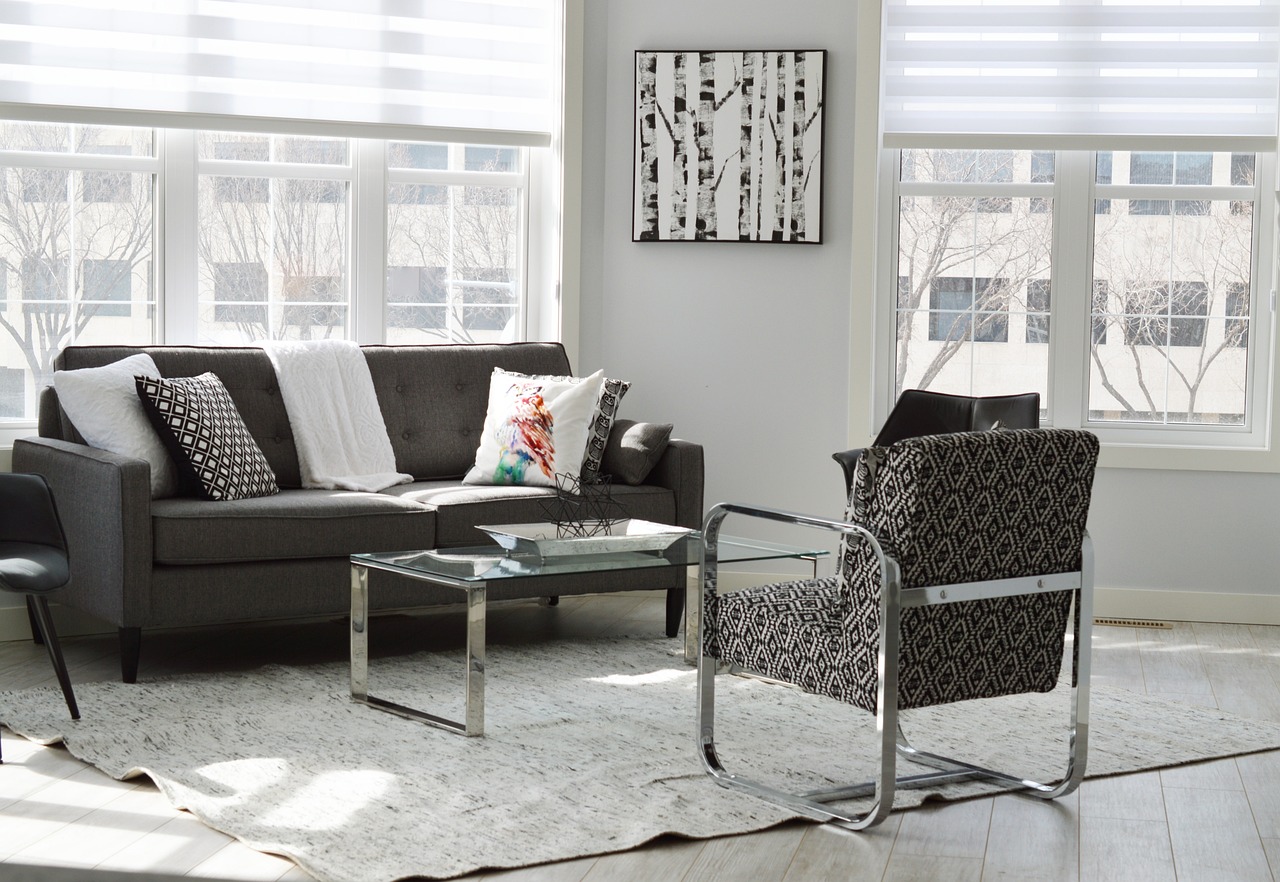
Flooring Considerations
When it comes to childproofing your living room, one of the most significant factors to consider is the flooring. The right kind of flooring can not only enhance the aesthetic appeal of your home but also play a crucial role in ensuring the safety of your little ones. Imagine your child joyfully running around, playing, and exploring their surroundings—now picture them slipping and falling on a hard surface. It’s a parent’s worst nightmare! Therefore, selecting the appropriate flooring can make a world of difference in creating a secure environment.
There are various flooring options available, each with its own set of advantages and disadvantages. For instance, carpet offers a soft landing for those inevitable tumbles, while hard floors are easier to clean and maintain. To help you weigh your options, let’s dive deeper into the two main categories of flooring: carpet and hard floors.
Carpet can be a fantastic choice for a child-friendly living room. It provides a cushioned surface that can help reduce the impact of falls, making it a safer option for toddlers and young children who are still mastering their balance. Additionally, carpets come in various textures and colors, allowing you to create a warm and inviting atmosphere. However, carpets can trap dust, allergens, and spills, which may pose health risks if not cleaned regularly.
On the other hand, hard floors, such as laminate, hardwood, or tile, are easier to clean and maintain. They can withstand spills and messes better than carpet, making them a practical choice for families with young children. However, hard surfaces can be unforgiving when it comes to falls. To mitigate this risk, consider using rugs or play mats in areas where your child plays the most.
Here’s a quick comparison table to summarize the pros and cons of each flooring type:
| Flooring Type | Pros | Cons |
|---|---|---|
| Carpet |
|
|
| Hard Floors |
|
|
Regardless of whether you choose carpet or hard flooring, it’s essential to think about the overall safety of the space. For instance, if you opt for hard floors, consider adding area rugs in play areas to provide a softer surface. Make sure that any rugs are securely anchored to the floor to prevent slipping. You can use non-slip rug pads or double-sided tape to keep them in place.
Area rugs can be a delightful addition to your living room, adding color and texture while providing a safe space for your child to play. However, they can also pose tripping hazards if not properly secured. When choosing area rugs, look for those with a low pile and a non-slip backing. This way, you can ensure that they stay in place, allowing your child to play freely without the worry of stumbling over loose edges. Additionally, regularly check the condition of your rugs and replace them if they become worn or frayed.
In conclusion, flooring considerations are a vital part of childproofing your living room. By weighing the pros and cons of different flooring options and implementing safety measures, you can create a beautiful and secure environment for your children to grow and thrive. Remember, safety doesn’t have to compromise style—there are plenty of options that can meet both needs!
Q: What is the safest type of flooring for a living room with children?
A: Generally, carpet is considered safer due to its cushioning effect, but hard floors can be made safer with the addition of area rugs and play mats.
Q: How can I prevent my child from slipping on hard floors?
A: Using non-slip mats, area rugs with rubber backing, and ensuring that the floors are kept dry can help minimize slipping hazards.
Q: Are there specific materials I should avoid when choosing flooring?
A: It's best to avoid flooring that is overly slippery or has sharp edges. Additionally, steer clear of materials that may emit harmful chemicals, such as certain types of vinyl.
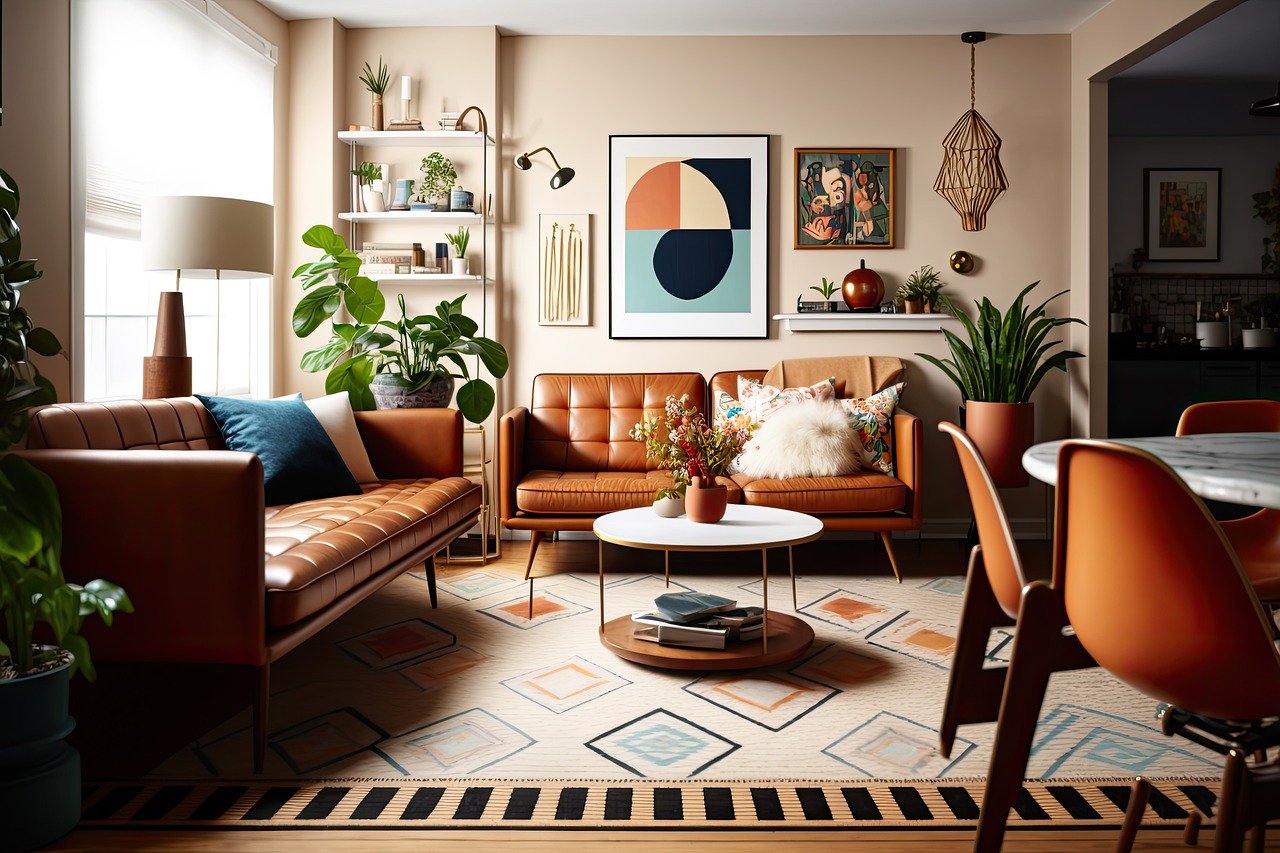
Carpet vs. Hard Floors
When it comes to childproofing your living room, one of the most significant decisions you'll face is choosing between carpet and hard floors. Each option has its unique set of advantages and disadvantages, and understanding these can help you make an informed choice that prioritizes safety while also fitting your lifestyle. Let's dive into the nitty-gritty of these flooring types.
Carpets offer a soft and cushioned surface, which can be a huge plus for families with young children. The softness of carpet can help absorb falls, reducing the likelihood of injuries when your little ones are exploring their surroundings. Additionally, carpets can provide warmth and comfort, making the living room a cozy space for playtime and family gatherings. However, carpets can be a bit challenging to maintain, especially with spills and accidents that come with having kids. Regular cleaning is essential, and certain stains can become permanent if not addressed promptly.
On the flip side, hard floors such as laminate, hardwood, or tile are often easier to clean and maintain. They can be wiped down quickly, making them a practical choice for busy parents. Hard floors are also less likely to trap allergens and dust, which can be beneficial for children with allergies. However, the downside is that they can be slippery, especially when wet, and they don’t provide the same level of cushioning as carpets. This means that falls can lead to more significant injuries on hard surfaces.
To help you visualize the differences, here’s a quick comparison table:
| Feature | Carpet | Hard Floors |
|---|---|---|
| Softness | Soft and cushioned | Hard and firm |
| Maintenance | Requires regular cleaning | Easy to clean, quick wipe down |
| Safety | Absorbs falls, less likely to cause injury | Can be slippery, higher risk of injury |
| Allergen Control | Can trap allergens | Less likely to trap allergens |
Ultimately, the decision between carpet and hard floors will depend on your family's specific needs and lifestyle. If your children are very young and prone to falls, a carpet may provide a safer environment. However, if you prioritize easy maintenance and a cleaner atmosphere, hard floors could be the way to go. Some parents even opt for a combination of both, using area rugs on hard floors to provide comfort while minimizing the risk of slips.
- What is the safest flooring option for toddlers? - Generally, carpets are considered safer due to their cushioning effect, but hard floors can be safe with proper precautions like non-slip mats.
- How do I maintain carpets with kids? - Regular vacuuming, prompt cleaning of spills, and professional cleaning every few months can help maintain carpets.
- Are hard floors better for allergy sufferers? - Yes, hard floors tend to trap fewer allergens compared to carpets, making them a better choice for those with allergies.

Area Rugs and Safety
When it comes to creating a child-friendly living room, area rugs can be a double-edged sword. On one hand, they add a touch of warmth and comfort to your space, making it feel cozy and inviting. On the other hand, if not properly secured, they can become a tripping hazard for your little adventurers. So, how do you strike the right balance? First, consider the material of the rug. Opt for non-slip options or those with a rubber backing to minimize the risk of slipping and sliding during playtime.
It's also essential to choose the right size of the area rug. A rug that is too small may not provide enough coverage, while one that is too large could create a maze of potential hazards. Ideally, your area rug should extend beyond the furniture, providing a safe zone for your children to play without the worry of tumbling over edges. In addition, ensure that the rug is easy to clean—after all, kids are notorious for spills and messes! Look for materials that are stain-resistant and washable, so you can maintain a tidy living space without too much hassle.
To further enhance safety, consider using rug grippers or double-sided tape to secure the corners of your rugs to the floor. This simple trick can prevent the rug from shifting unexpectedly, providing a stable surface for your children to play on. If you have multiple rugs, be cautious about their placement. For instance, avoid placing rugs near furniture edges or in high-traffic areas where children might run and trip.
Lastly, if you’re considering layering rugs, keep in mind that this can create uneven surfaces, which may lead to accidents. Instead, try to maintain a flat and even surface throughout your living room. By taking these precautions, you can enjoy the aesthetic appeal of area rugs while ensuring a safe environment for your children to explore and play.
- What type of area rug is safest for children? Look for rugs made from natural fibers with a non-slip backing. Avoid rugs with long fringes or loose edges that can pose tripping hazards.
- How can I keep area rugs clean? Choose machine-washable rugs or those that can be easily spot-cleaned. Regular vacuuming will also help keep them free from dirt and allergens.
- Are there any rugs I should avoid? Yes, steer clear of rugs with toxic materials or those that shed easily, as they can pose a choking hazard for younger children.
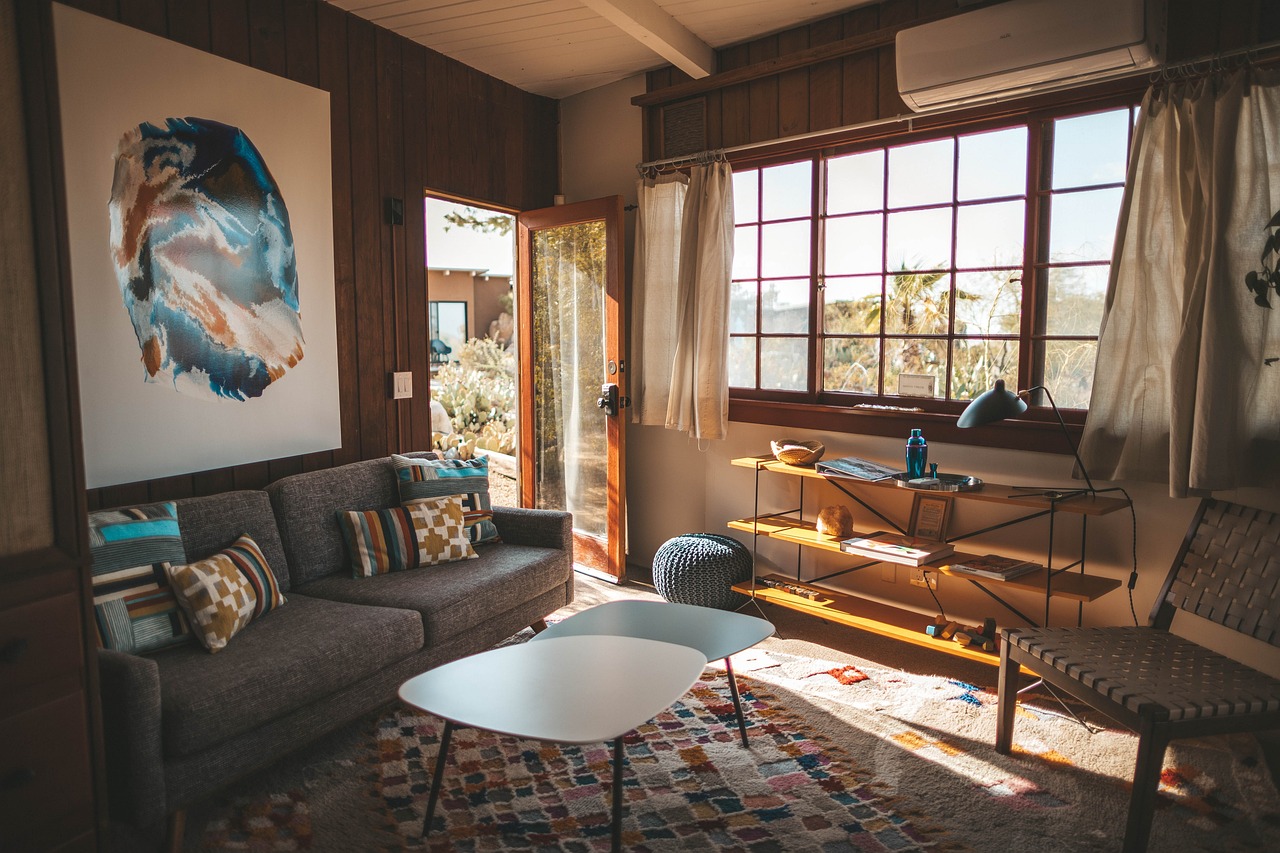
Creating Safe Play Zones
When it comes to children, creating safe play zones in your living room is like building a fortress of fun! Imagine a space where your little ones can explore, play, and let their imaginations run wild, all while being protected from potential hazards. It’s essential to designate specific areas for play, as this not only keeps your children engaged but also helps minimize risks that come with a cluttered environment. Think of it as creating a mini-adventure land right in your home!
To start, consider the layout of your living room. You want to select a location that is both spacious and away from any heavy furniture or sharp corners. This area should be a soft zone, where the floor is cushioned enough to absorb any falls. Incorporating play mats can be a game-changer. These mats provide a soft surface for your children to play on, making it safer when they tumble or roll around. Plus, they come in various colors and designs, adding a splash of fun to your living room décor!
Another important aspect of creating safe play zones is to ensure that the toys are organized effectively. An organized toy area reduces clutter and potential hazards, allowing children to find what they need without tripping over scattered items. Consider using storage solutions like bins or shelves that are easily accessible for your kids. This way, they can learn to put their toys away after playtime, fostering a sense of responsibility while keeping the space tidy. You might even want to label the bins with pictures or words, making it easier for younger children to recognize where their toys belong.
Additionally, it's wise to monitor the types of toys you provide. Opt for age-appropriate toys that are free from small parts that could pose choking hazards. Regularly check for any broken or damaged toys, as these can lead to accidents. If your children are playing with blocks or other construction toys, ensure they have a safe area to build, away from any fragile items that could get knocked over. You might even consider setting up a designated craft area with safe, non-toxic supplies, allowing your kids to express their creativity without risking injury.
Finally, remember that play zones should be flexible. As your children grow, their play needs will change. Keep an open line of communication with your kids about what they enjoy and what they feel comfortable with. This way, you can adapt the space to suit their evolving interests while maintaining safety. After all, the goal is to create a nurturing environment where your children can thrive and have fun!
- What is the best way to create a safe play zone?
The best way is to choose a spacious area with soft flooring, use play mats, and keep toys organized to minimize clutter.
- How can I ensure my child's toys are safe?
Regularly inspect toys for any damage, choose age-appropriate options, and avoid toys with small parts for younger children.
- Can I involve my children in organizing their play area?
Absolutely! Involving them teaches responsibility and helps them understand the importance of safety and organization.

Using Play Mats
When it comes to creating a safe play environment for your little ones, play mats are an absolute game changer! These vibrant, cushioned surfaces not only provide a soft landing for your child but also add a splash of color and fun to your living room. Imagine your child tumbling and rolling without a care in the world, all while you relax knowing they are safe and sound on a cushy mat designed just for them!
Choosing the right play mat can be overwhelming with so many options available. You want something that is not only visually appealing but also practical and safe. Look for mats made from non-toxic materials that are free from harmful chemicals. This ensures that even if your child decides to explore the mat with their mouth (as toddlers often do), they won’t be exposed to any dangerous substances.
Another important factor to consider is the thickness of the mat. A thicker mat offers better cushioning, which can help prevent injuries during playtime. Ideally, you should look for mats that are at least 1 inch thick. This thickness can absorb the impact of falls, making it a safer option for active toddlers who are just learning to walk or run.
In addition to safety, play mats can also be quite versatile. They come in various shapes and sizes, allowing you to customize your play area. For instance, you can choose a large rectangular mat that covers a significant portion of your living room floor or opt for smaller, interlocking tiles that can be arranged in different configurations. Some mats even feature educational designs, such as letters, numbers, or animals, turning playtime into a fun learning experience!
When setting up the play mat, make sure to place it on a flat, even surface to avoid any tripping hazards. If you’re using interlocking tiles, ensure they are securely connected to prevent them from shifting during play. Additionally, you can use double-sided tape underneath the mat to keep it in place, especially if your child tends to run around a lot.
Lastly, don't forget about maintenance! Play mats can accumulate dirt and spills, so it's essential to choose one that is easy to clean. Look for mats that can be wiped down or machine washed, ensuring that your child always has a clean and safe space to play. With the right play mat, you can create a cozy and secure zone for your little one to explore their imagination.
- What materials should I look for in a play mat? Opt for non-toxic, BPA-free materials that are safe for children.
- How do I clean a play mat? Many mats can be wiped down with a damp cloth, while others are machine washable. Always check the manufacturer's instructions.
- Are play mats safe for infants? Yes, as long as they are made from safe materials and provide adequate cushioning.
- Can I use a play mat on carpet? Yes, but ensure it lays flat and is secure to avoid any tripping hazards.
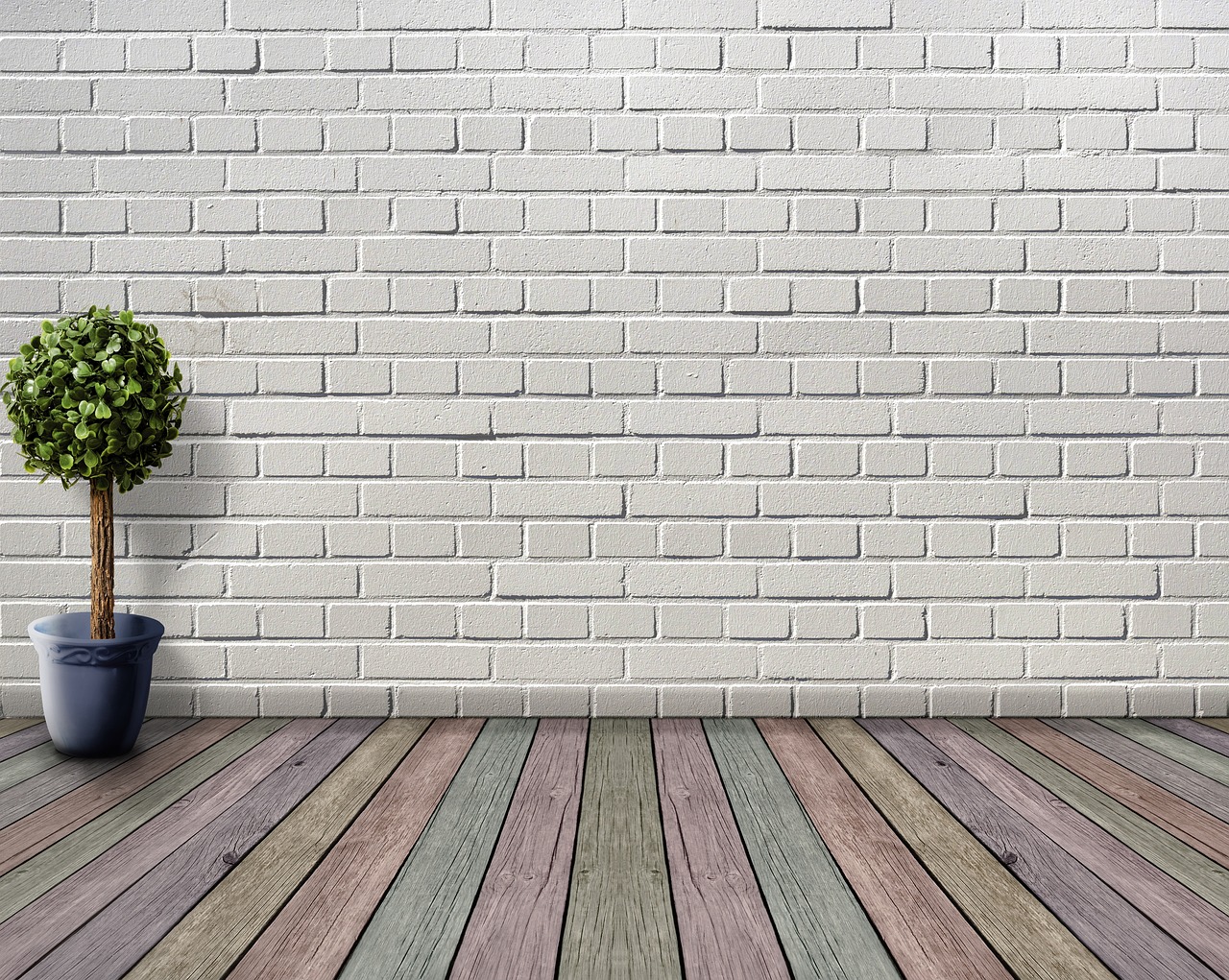
Organizing Toys Effectively
When it comes to childproofing your living room, one of the most crucial aspects is . A well-organized toy area not only reduces clutter but also minimizes potential hazards for your little ones. Imagine a living room where toys are scattered everywhere—tripping over a rogue Lego piece or a stuffed animal can lead to accidents. Therefore, it’s essential to create a system that makes it easy for children to access their toys while keeping the space safe and tidy.
First and foremost, consider using storage solutions that are both functional and appealing. For instance, colorful bins or baskets can make the toy area look inviting while helping to keep things organized. You can choose from a variety of materials, but ensure they are lightweight and easy for kids to handle. Labeling these storage containers can also be a game-changer. Not only does it help children learn where their toys belong, but it also encourages them to put things back after playtime. You might want to use images for younger children who can’t read yet, making it easier for them to identify where each toy goes.
Another effective strategy is to implement a rotation system. Instead of overwhelming your child with all their toys at once, consider rotating them every few weeks. This approach keeps the play area fresh and exciting, as your child will feel like they have new toys to explore. Plus, it drastically reduces clutter, making the living room a safer space. You can keep the toys not currently in use stored away in a closet or a designated area, ensuring they're out of sight but easily accessible when it’s time for a change.
To further enhance safety, think about the heights at which toys are stored. Keep smaller toys out of reach of younger children to reduce choking hazards, while larger toys can be stored lower down for easy access. This strategy not only promotes safety but also encourages independence as children learn to retrieve their toys on their own.
Lastly, don’t forget to involve your children in the organizing process. Ask them to help you categorize their toys into groups, such as action figures, blocks, or art supplies. This not only makes the task more enjoyable for them, but it also teaches valuable organizational skills. Plus, it’s a great way to bond and encourage responsibility. In the end, a well-organized toy area not only fosters a safer living environment but also promotes creativity and play, allowing your children to explore their imaginations without the worry of hazards lurking around every corner.
- How often should I organize my child's toys? It's a good idea to organize toys every few weeks or whenever you notice clutter building up. Regular checks can help maintain a safe and tidy environment.
- What are some good storage options for toys? Consider using bins, baskets, shelves, or toy chests. Make sure they are lightweight and easy for your child to access.
- How can I teach my child to clean up after playing? Involve them in the organizing process and make it fun. Use songs or games to encourage them to put their toys away.

Childproofing Technology
In today's digital age, ensuring the safety of your children extends beyond physical hazards; it also encompasses technology. With the increasing presence of electronic devices in our homes, it's crucial to consider how these gadgets can pose risks to young ones. From sharp edges on devices to the potential for excessive screen time, childproofing your living room means taking a comprehensive approach that includes technology. So, how can you make your living space tech-friendly while keeping your little explorers safe?
First off, securing electronics is a top priority. TVs, gaming consoles, and even remote controls can be enticing yet dangerous for curious children. To mitigate risks, consider the following strategies:
- Anchor Heavy Items: Use anti-tip straps to secure TVs and heavy furniture to the wall, preventing them from toppling over if a child pulls on them.
- Store Devices Out of Reach: Keep gaming consoles and other electronics on high shelves or inside cabinets to minimize access.
- Use Cord Management Solutions: Organize and conceal cords with cord covers or clips to prevent tripping hazards and reduce the temptation for little hands to tug at them.
But securing devices is just one piece of the puzzle. Managing screen time effectively is equally important for the health and well-being of your children. Establishing reasonable limits on how much time your kids spend in front of screens can foster healthier habits. Here are some tips to help you set those boundaries:
- Create a Schedule: Designate specific times for screen use, such as after homework or chores, to help your children understand when it's appropriate to engage with technology.
- Encourage Alternatives: Promote other activities, such as outdoor play, reading, or arts and crafts, to balance screen time with more enriching experiences.
- Be a Role Model: Demonstrate healthy tech habits yourself. Children often mimic their parents, so if they see you managing your screen time well, they're likely to follow suit.
It's essential to have open conversations with your children about technology use. Talk to them about the potential dangers of excessive screen time and the importance of taking breaks. Encourage them to come to you with any questions or concerns they may have about technology, fostering an environment where they feel comfortable discussing these topics.
By implementing these strategies, you can create a safe and balanced environment that allows your children to enjoy technology responsibly. Remember, childproofing your living room isn't just about keeping things out of reach; it's about cultivating a safe space where your kids can learn, grow, and explore both the physical and digital worlds around them.
Q: How can I keep my child safe from electronics in the living room?
A: Secure heavy items to prevent tipping, store devices out of reach, and manage cords to eliminate tripping hazards. Additionally, consider using childproof locks on cabinets containing electronics.
Q: What are some good screen time limits for children?
A: The American Academy of Pediatrics recommends no more than one hour of high-quality programming for children aged 2 to 5 years. For older children, it's essential to establish reasonable limits based on their individual needs and family values.
Q: How can I encourage my child to engage in activities other than screen time?
A: Introduce them to various hobbies, such as sports, reading, or arts and crafts. Create a schedule that includes designated times for these activities, making them a regular part of their routine.

Securing Electronics
In today's tech-savvy world, our living rooms are often filled with various electronic devices, from televisions and gaming consoles to tablets and laptops. While these gadgets can provide entertainment and educational opportunities for children, they can also pose significant risks if not properly secured. The key to a childproof living room is ensuring that all electronics are stored and managed in a way that minimizes hazards and keeps curious little hands safe.
First and foremost, it’s essential to secure all electronic devices to prevent them from tipping over or being easily pulled down. For instance, televisions should be anchored to the wall using safety straps or brackets specifically designed for this purpose. This helps prevent accidental falls that could lead to serious injuries. Additionally, consider using furniture with built-in storage for gaming consoles and other devices, which can keep them out of reach while maintaining easy access for adults.
Another important aspect is managing cords and cables. Exposed wires can be a choking hazard, and they can also lead to electrical accidents if children decide to tug on them. To tackle this issue, you can use cord covers or cable management systems that neatly bundle wires together and keep them out of sight. Not only does this reduce clutter, but it also creates a cleaner, safer environment. Here are some effective strategies for securing cords:
- Use adhesive clips to route cords along walls or furniture.
- Invest in cord management boxes to conceal power strips and excess cables.
- Keep cords out of reach by using furniture to create barriers.
Furthermore, remote controls and other small electronic devices should be stored in a designated area, preferably out of reach of young children. Consider using a basket or a drawer specifically for these items. This not only keeps them organized but also prevents kids from accidentally misplacing or damaging them. You can even involve your children in this process by teaching them where these items belong, making it a fun and educational activity.
Lastly, it’s important to establish screen time limits for electronic devices to promote healthy habits. Setting boundaries on how long children can use screens helps ensure they engage in a variety of activities, from playtime to reading. You might consider using apps or timers to help manage this, making it easier for both you and your children to adhere to these guidelines.
By taking these steps to secure electronics in your living room, you not only protect your children from potential hazards but also create a more organized and enjoyable space for the entire family. Remember, a little planning goes a long way in fostering a safe environment where kids can explore and learn without unnecessary risks.
Here are some common questions parents have about securing electronics in their living rooms:
- What are the best ways to anchor a television? You can use safety straps or brackets that are specifically designed for securing TVs to walls. Make sure to follow the manufacturer's instructions for installation.
- How can I prevent my child from accessing my gaming console? Consider placing the console in a cabinet with a lock or using furniture that has built-in storage to keep it out of reach.
- Are there safe alternatives to traditional cords? Yes, consider using wireless devices or battery-operated gadgets to reduce the number of cords in your living room.
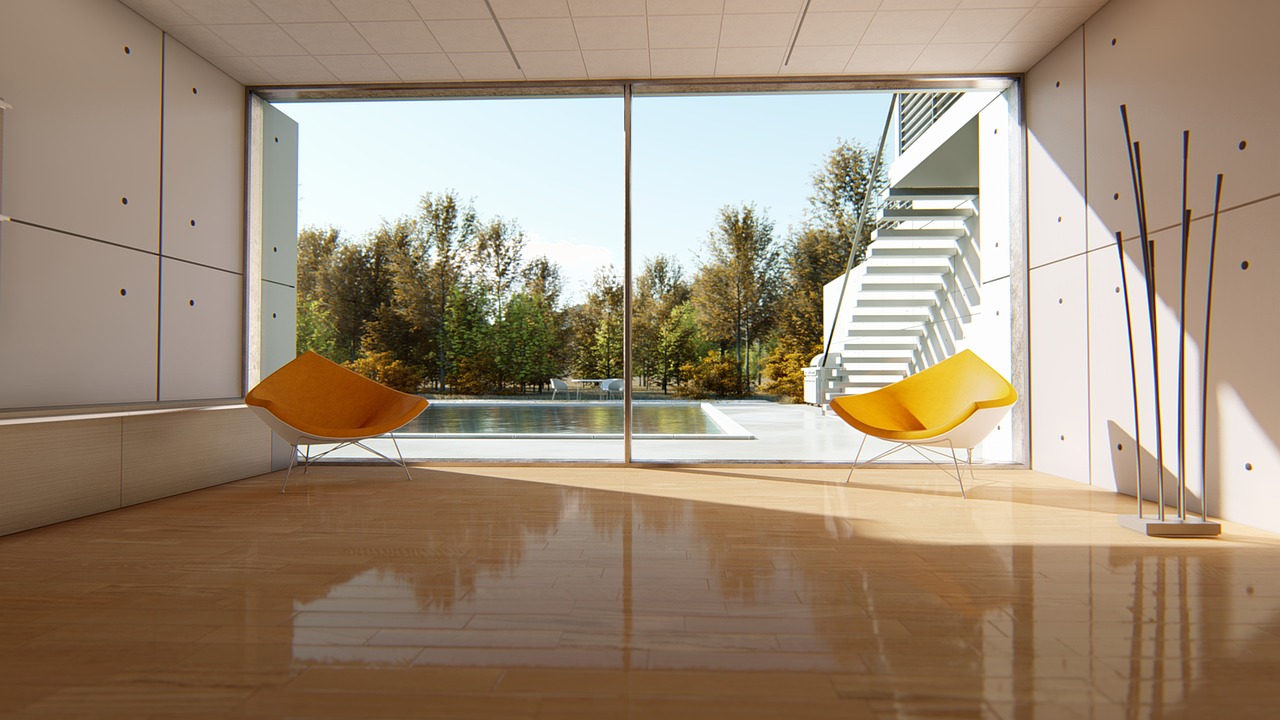
Setting Screen Time Limits
In our fast-paced digital world, where screens are a fundamental part of daily life, setting screen time limits for children is more crucial than ever. It’s not just about restricting access; it’s about fostering a healthy relationship with technology. Have you ever noticed how easy it is to lose track of time when you're engrossed in a show or a game? Children are no different. They can easily become absorbed in their favorite cartoons or video games, often at the expense of other important activities like playing outside, reading, or spending quality time with family. Therefore, creating a balanced approach to screen time is essential.
To effectively set screen time limits, consider establishing a daily schedule that allocates specific times for screen use. This can help children understand when it's appropriate to engage with technology and when it's time to unplug. For instance, you might allow them to watch their favorite show after school, but restrict screen time during meals or before bedtime. This not only promotes healthy habits but also encourages them to engage in various activities throughout the day.
Moreover, it's vital to lead by example. Children often mimic their parents' behaviors, so if they see you constantly on your phone or tablet, they may think it's acceptable for them to do the same. Show them the benefits of engaging in other activities, like reading a book or playing a board game. Set aside family time that is screen-free to strengthen your bond and promote healthier habits.
When determining the right amount of screen time, consider the age of your child. The American Academy of Pediatrics recommends the following guidelines:
| Age Group | Recommended Screen Time |
|---|---|
| Under 18 months | Avoid screen time, except for video chatting. |
| 18 to 24 months | Introduce high-quality programming with parental guidance. |
| 2 to 5 years | Limit screen use to 1 hour per day of high-quality content. |
| 6 years and older | Consistent limits on screen time to ensure adequate sleep, physical activity, and other healthy behaviors. |
As children grow, their needs and interests will change, and so should your approach to screen time. Regularly reassess your limits and be open to discussions with your child about their screen time preferences. This can help them feel involved and responsible, fostering a sense of autonomy. Encourage them to express how they feel about their screen time and any new interests they may have developed.
Lastly, it’s essential to monitor the content your children are consuming. Not all screen time is created equal. Prioritize educational and age-appropriate content that promotes learning and creativity. This way, you can ensure that screen time is not just a passive activity but an engaging and enriching experience.
- What is the best way to set screen time limits? Start by creating a daily schedule and involving your child in the decision-making process. Discuss the importance of balancing screen time with other activities.
- How can I encourage my child to engage in activities other than screens? Lead by example, set aside screen-free family time, and introduce them to various hobbies and outdoor activities.
- Are there specific types of content I should prioritize? Yes, focus on educational and age-appropriate programming that promotes learning and creativity.
- How often should I reassess screen time limits? Regularly reassess limits based on your child's age, interests, and behavior, and keep an open dialogue about their screen time preferences.
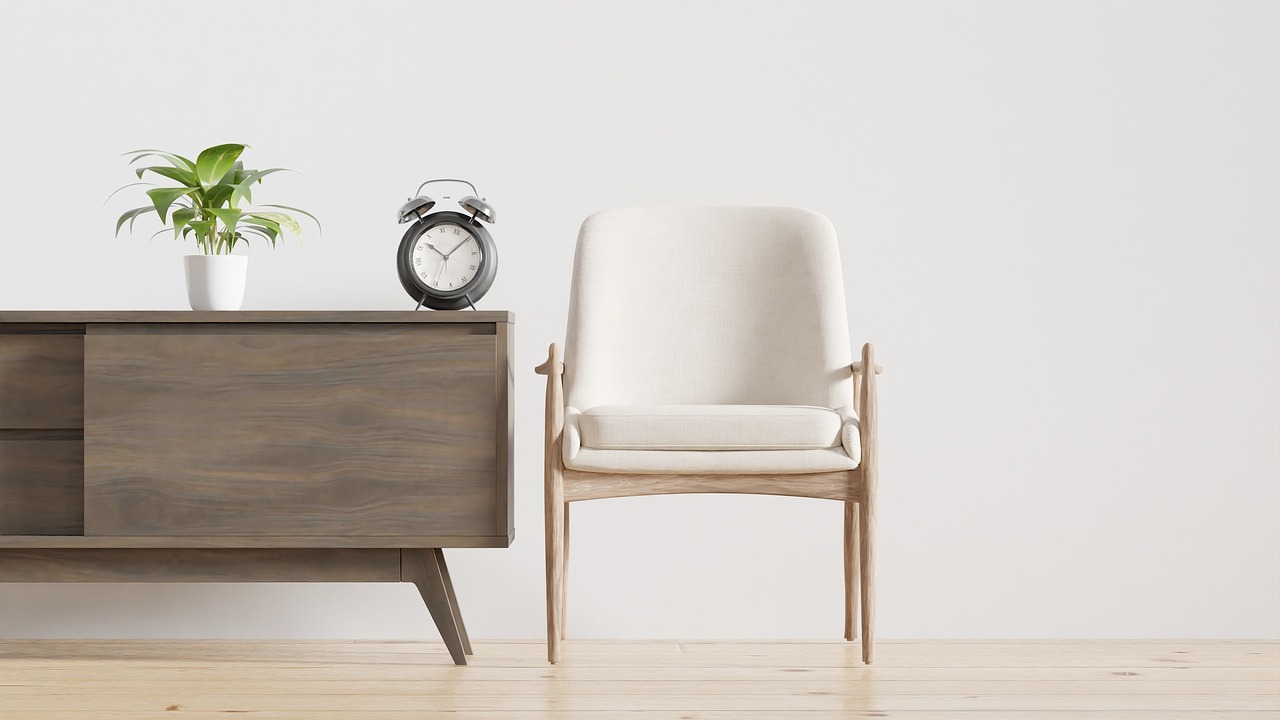
Regular Safety Checks
Keeping your living room safe for your little ones isn't a one-time task; it's an ongoing commitment. Just like how a gardener tends to their plants, you need to regularly check your living space to ensure it remains a secure haven for your children. Over time, as kids grow and explore, their needs change, and so do the potential hazards in your home. Regular safety checks help you stay ahead of any risks that might arise.
So, what exactly should you be looking for during these safety checks? It's essential to develop a routine that allows you to assess various aspects of your living room. Here’s a handy checklist to consider:
- Furniture Stability: Ensure that all furniture is stable and securely positioned. Check for any wobbling or loose parts that could pose a tipping hazard.
- Sharp Edges: Regularly inspect furniture for any sharp edges or corners that might have become exposed due to wear and tear.
- Cord Management: Look for any cords or wires that may have come loose and could be within reach of curious hands.
- Flooring Safety: Check for any loose area rugs or carpets that could cause trips and falls.
- Play Area Maintenance: Ensure that play zones are free from clutter and that toys are in good condition, with no broken pieces that could cause injury.
It's also essential to involve your children in these safety checks. Teaching them about safety not only helps them understand the importance of a secure environment but also empowers them to take responsibility for their own safety. You can make it a fun activity by turning it into a game where they help you identify potential hazards. This way, they learn to be aware of their surroundings while having a blast!
Remember, safety isn't just about preventing accidents; it's also about creating a nurturing space where kids can thrive. Regularly updating your safety measures as your children grow will help you adapt to their changing needs. For example, as toddlers become more mobile, you may need to adjust furniture arrangements or secure heavier items that they might try to climb on.
Lastly, don't forget to have open conversations with your children about safety. Discuss what they should do if they encounter something dangerous or if they feel uncomfortable. This dialogue not only reinforces their understanding of safety but also fosters trust and communication between you and your kids.
Q: How often should I conduct safety checks in my living room?
A: It's a good idea to conduct safety checks at least once a month, or more frequently if your child is particularly active or if you've made changes to the room.
Q: What should I do if I find a potential hazard?
A: If you find a hazard, address it immediately. This could mean moving furniture, securing cords, or removing dangerous items altogether.
Q: How can I teach my children about safety?
A: You can teach your children about safety by involving them in safety checks, discussing potential hazards, and establishing clear rules about safe behavior in the living room.
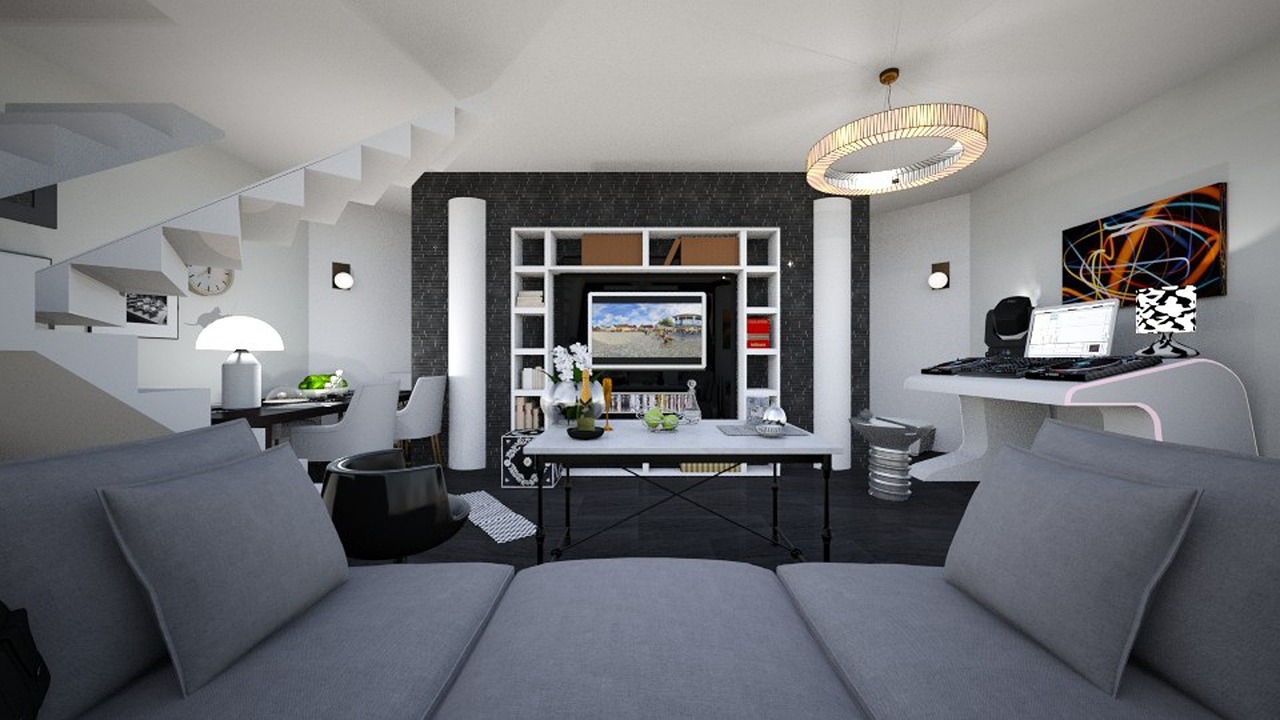
Updating Safety Measures
As children grow, their abilities and curiosities evolve, which means that the safety measures you initially put in place may need to be reassessed and updated. It's essential to regularly evaluate your living room's safety features to ensure they remain effective and relevant. Think of it like a well-tended garden; just as plants need pruning and care, your childproofing efforts require ongoing attention to thrive.
Start by observing your child's development. Are they climbing, reaching, or exploring areas you thought were previously safe? If so, it may be time to make adjustments. For instance, as toddlers become more mobile, furniture that once seemed secure might now pose a tipping hazard. Consider using anti-tip straps on bookshelves and heavy furniture to prevent accidents.
Additionally, keep an eye on the types of toys and activities that are becoming more prevalent in your living room. Toys with small parts or those that can easily break should be stored out of reach of younger siblings. Regularly inspect toys for wear and tear, and replace any that are damaged. You might even set up a designated toy area that can be easily monitored, ensuring that playtime remains safe and enjoyable.
Another vital aspect of updating safety measures involves involving your children in the process. Teaching them about safety can empower them to make better choices. For example, you can have discussions about why certain areas are off-limits or why specific items need to be handled with care. This not only reinforces safety but also helps them understand the importance of being responsible in their environment.
Moreover, consider creating a checklist for regular safety checks. This can include items such as:
- Inspecting furniture for stability
- Checking for loose cords and securing them
- Reviewing toy storage and ensuring toys are age-appropriate
- Reassessing the placement of electronics and ensuring they are out of reach
By making this a routine part of your household maintenance, you can ensure that your living room remains a safe haven for your little ones. Remember, childproofing is not a one-and-done task; it's an ongoing commitment to creating a secure environment as your family grows and changes.
1. How often should I update safety measures in my living room?
It's advisable to assess safety measures every few months, especially as your child reaches new developmental milestones. Regular checks can help you stay ahead of potential hazards.
2. What are some common safety hazards in a living room?
Common hazards include sharp furniture edges, unstable furniture, exposed cords, and small objects that could pose choking risks. Regularly inspecting these areas can help mitigate risks.
3. How can I involve my children in safety discussions?
Engage your children by explaining the reasons behind safety measures. You can also create fun activities around safety, like a scavenger hunt to find and secure potential hazards.
4. Are there specific products recommended for childproofing?
Yes, look for furniture with rounded edges, anti-tip anchors for heavy items, cord organizers, and soft play mats. Always choose non-toxic materials for toys and furniture.
5. What should I do if I notice a safety concern?
Address any safety concerns immediately. If a piece of furniture seems unstable, secure it or remove it from the living space until it can be fixed. Regular communication with your child about safety can also help them understand the importance of reporting concerns.

Involving Children in Safety
Involving children in their own safety is not just a good idea; it’s essential for nurturing responsible habits that will last a lifetime. When kids feel like they have a say in their environment, they're more likely to understand the rules and adhere to them. So, how do you engage your little ones in the process of childproofing? It starts with open communication.
Begin by explaining the importance of safety in a way that resonates with their understanding. Use simple language and relatable scenarios. For instance, you might say, “Just like how we wear helmets when riding bikes to protect our heads, we need to make sure our living room is safe so we don’t get hurt while playing.” This analogy helps children connect with the concept of safety on a personal level.
Next, involve them in the childproofing process by making it a fun activity. You can turn it into a game where they help identify potential hazards. Ask questions like, “What do you think could be dangerous in this room?” or “Where do you think we should put the toys so they’re safe?” This not only empowers them but also gives you insight into their perspective.
To make it even more engaging, consider creating a “Safety Checklist” together. This checklist can include items like:
- Checking for sharp corners on furniture
- Ensuring cords are out of reach
- Identifying any small objects that could pose a choking hazard
By having them participate in this way, you’re teaching them to be observant and proactive about their safety. Plus, it’s a great way to bond as you work together to create a secure environment.
As they grow, encourage them to take ownership of their safety. For instance, you might set up a routine where they check the living room for hazards before playtime. This not only reinforces their understanding of safety but also fosters independence. Remind them that safety is a shared responsibility; it’s not just about keeping them safe, but about creating a safe space for everyone in the family.
Finally, make sure to regularly revisit these discussions. As children develop and their abilities change, their understanding of safety will evolve as well. Regular conversations about safety can help reinforce the importance of being aware and cautious in their surroundings. Ask them if they have any new ideas or concerns about safety, which shows that their opinions matter and that you value their input.
1. At what age should I start involving my child in safety discussions?
It's beneficial to start as early as possible, even when they are toddlers. Use simple language and concepts that they can understand. As they grow, you can introduce more complex safety topics.
2. How can I make safety discussions more engaging for my child?
Use games, checklists, and relatable scenarios to make safety discussions fun. Involve them in identifying hazards and creating solutions together.
3. Should I involve my child in all aspects of childproofing?
While it's great to involve them in discussions and certain tasks, you should still take the lead in implementing safety measures to ensure they are done correctly and effectively.
4. How often should we review safety in our home?
Regularly review safety measures, especially as your child grows and their abilities change. A good practice is to check in every few months or whenever you rearrange the living space.
Frequently Asked Questions
- What are the basic principles of childproofing a living room?
Childproofing your living room starts with identifying potential hazards such as sharp edges, unstable furniture, and exposed cords. The goal is to create a safe environment where children can explore freely without the risk of injury. This involves rearranging furniture, securing cords, and choosing safe materials.
- How can I arrange furniture to make it safer for my kids?
When arranging furniture, consider creating open spaces for play while keeping heavy items away from edges. Use sturdy, low furniture that won’t tip easily and avoid placing items that could fall within reach of little hands. A well-thought-out layout can significantly reduce the risk of accidents.
- What type of flooring is best for a child-friendly living room?
Soft, slip-resistant flooring is ideal for a child-friendly living room. Carpets provide cushioning but can be harder to clean, while hard floors are easier to maintain but may be slippery. Consider using area rugs that are secured to the floor to provide a soft play surface without the tripping hazard.
- How can I create a safe play zone in my living room?
Designate a specific area for play, using soft mats or rugs to create a comfortable space. Keep toys organized in bins or shelves to reduce clutter and ensure that everything is within easy reach. This not only keeps the area tidy but also helps children understand where to play safely.
- What steps should I take to secure electronics in my living room?
To secure electronics, ensure that TVs and other devices are anchored to the wall to prevent tipping. Store remote controls and cables out of reach, and consider using cord organizers to keep wires tidy and inaccessible. This helps prevent accidents and keeps your living room safe.
- How often should I conduct safety checks in my living room?
Regular safety checks should be performed at least once a month, or whenever you notice changes in your child's behavior or abilities. As children grow, their needs and risks change, so it’s important to adjust safety measures accordingly to ensure ongoing protection.
- How can I involve my children in safety practices?
Involving children in safety practices can be as simple as discussing the importance of being careful around furniture and explaining why certain areas are off-limits. Make it a fun learning experience by playing games that teach safety rules, helping them understand their environment better.



















